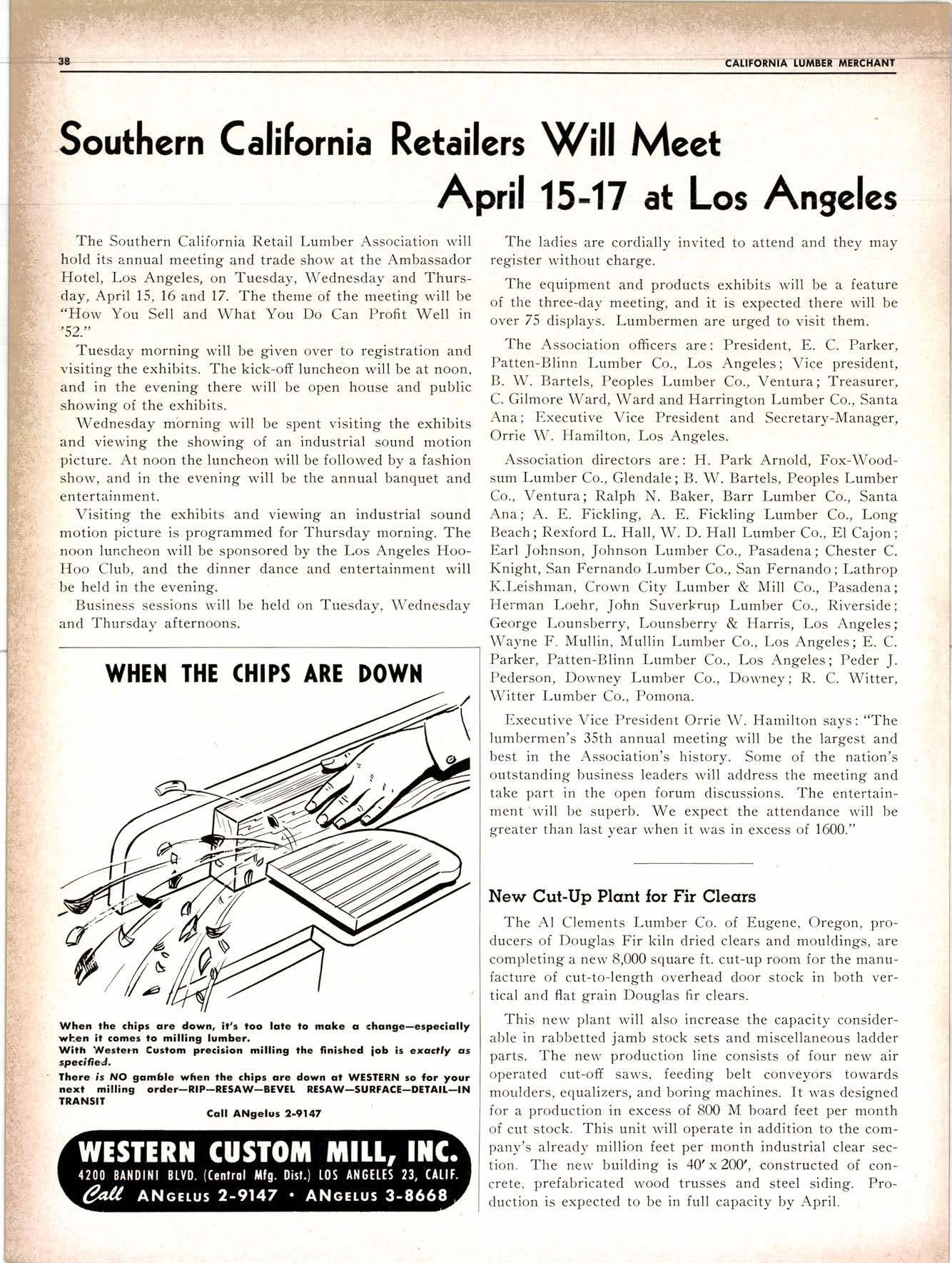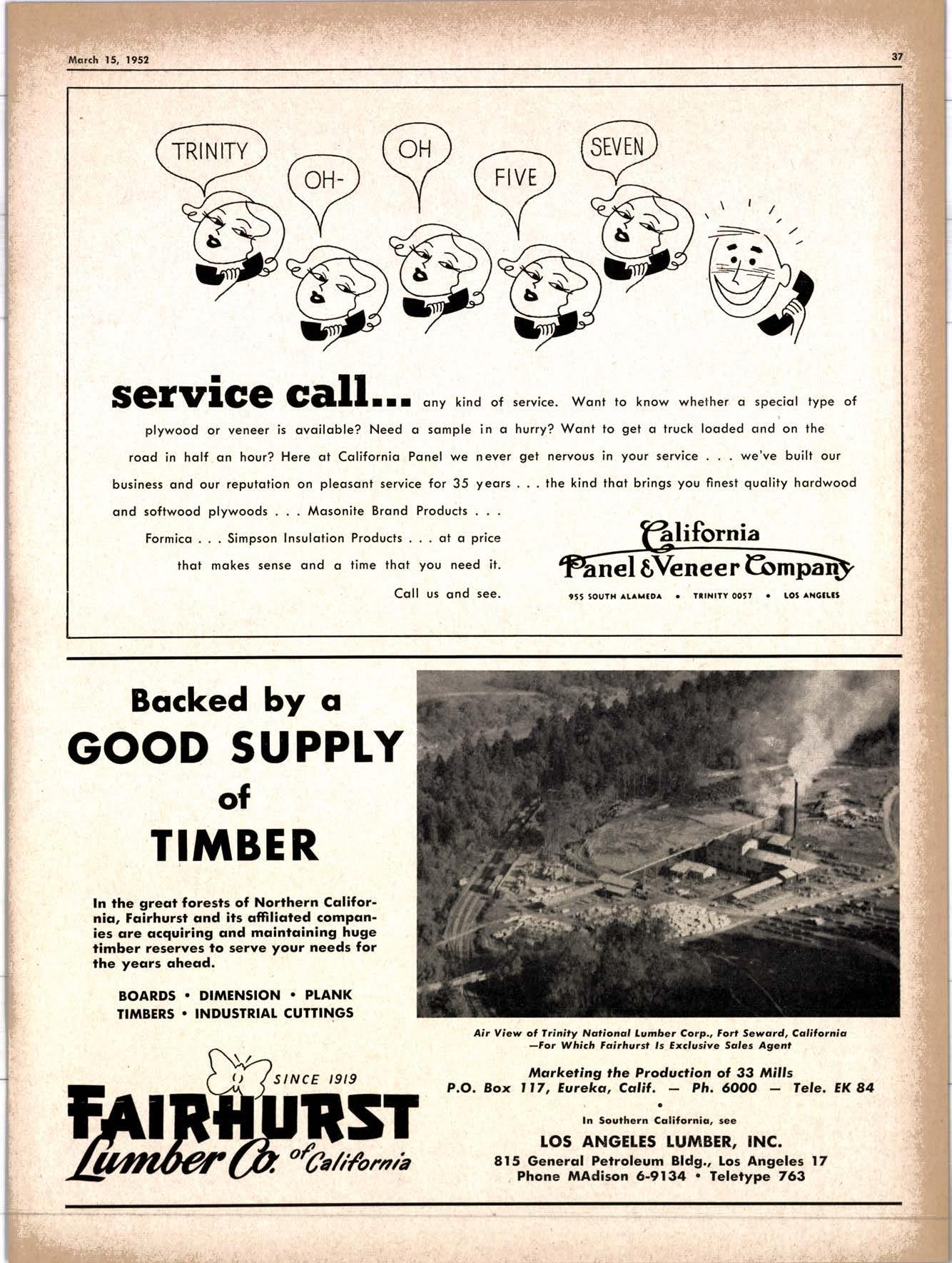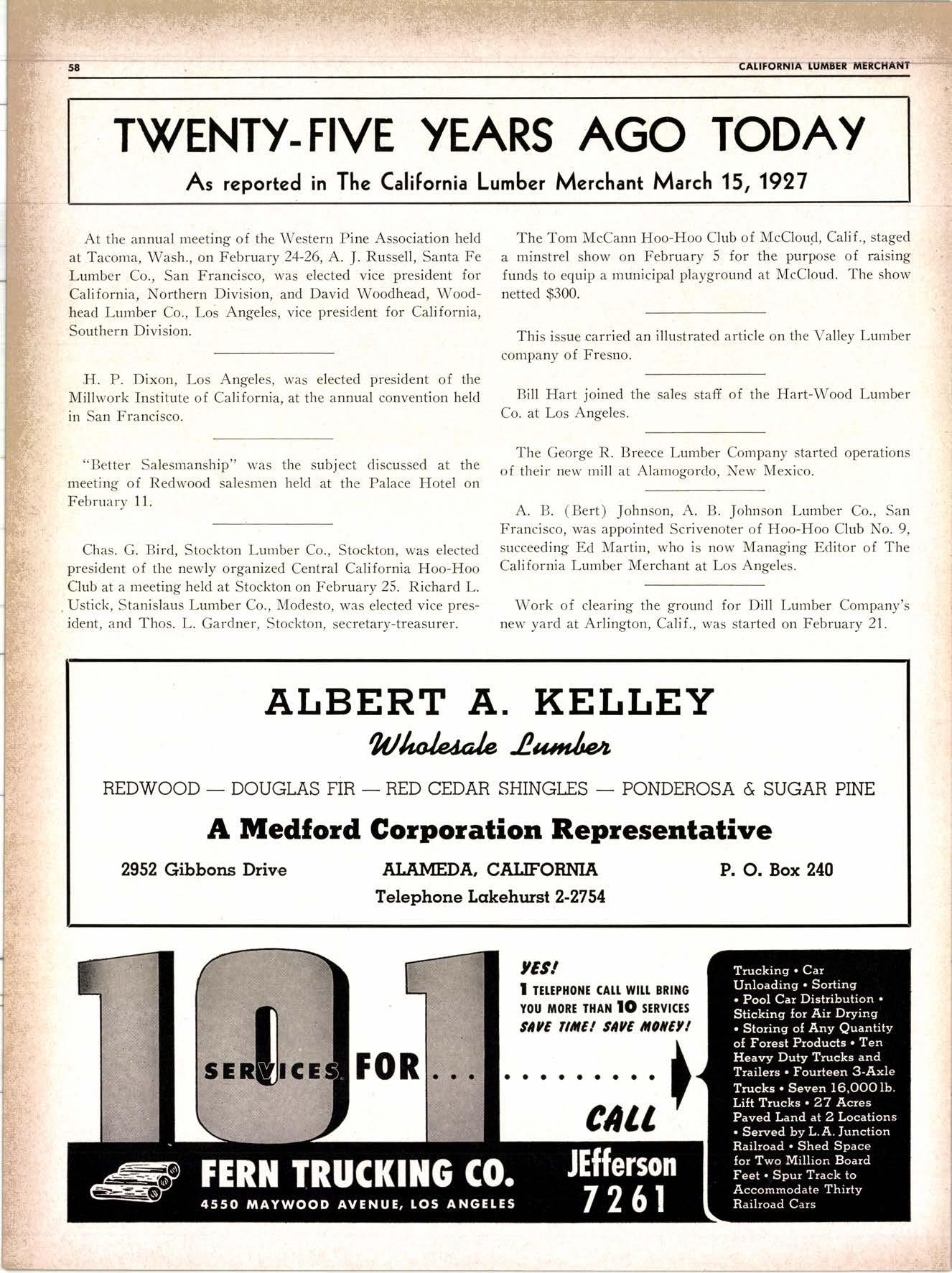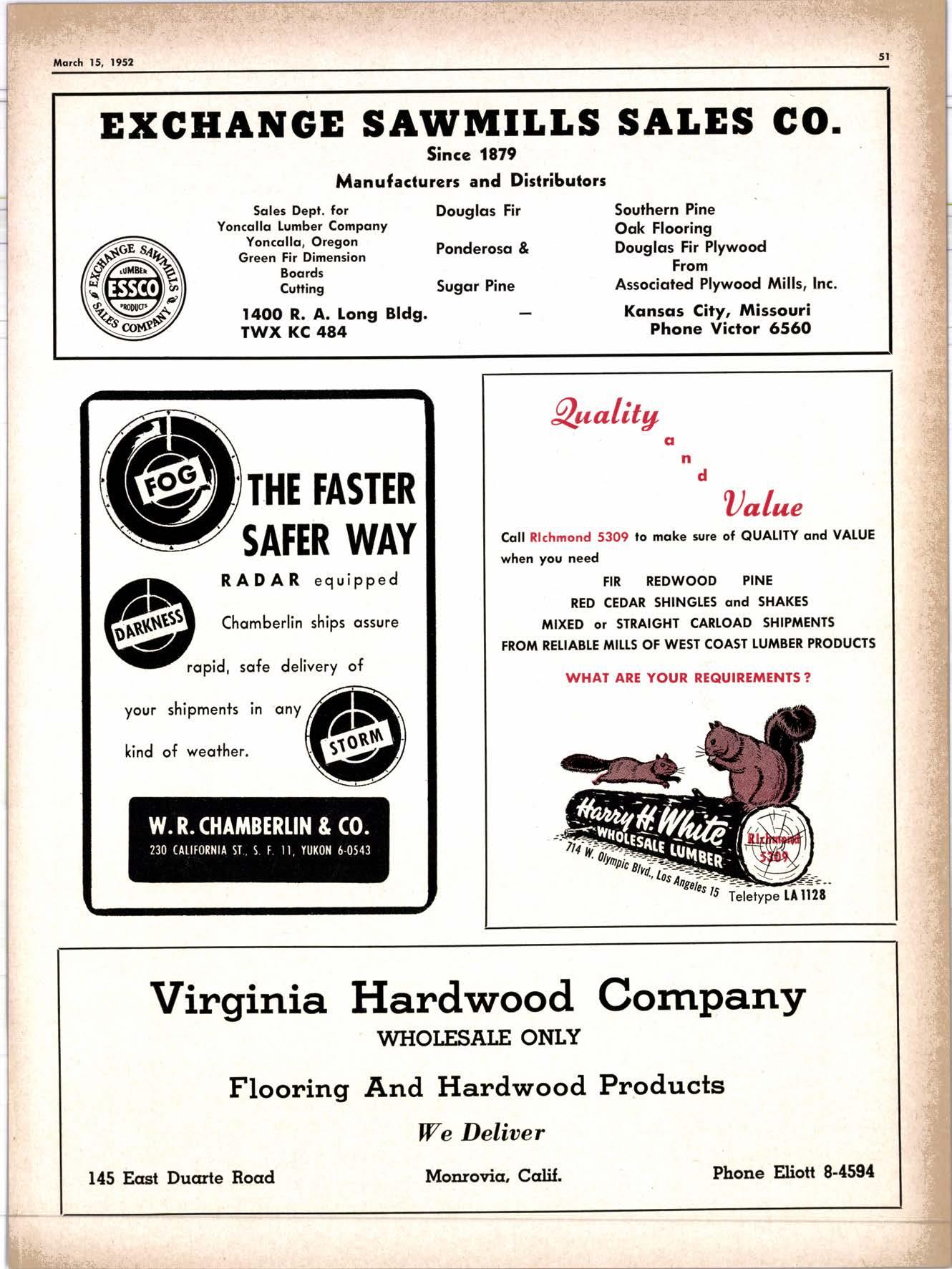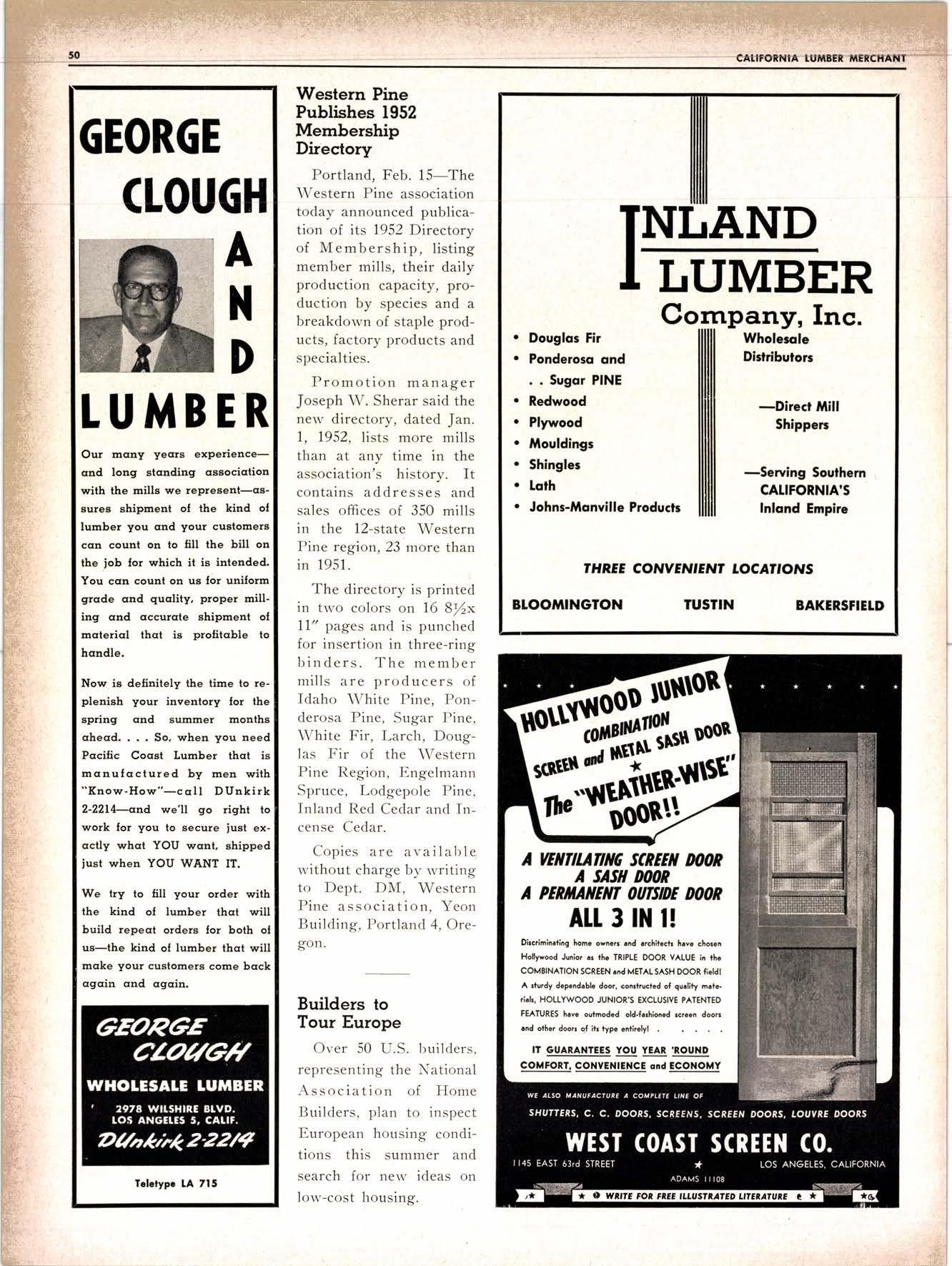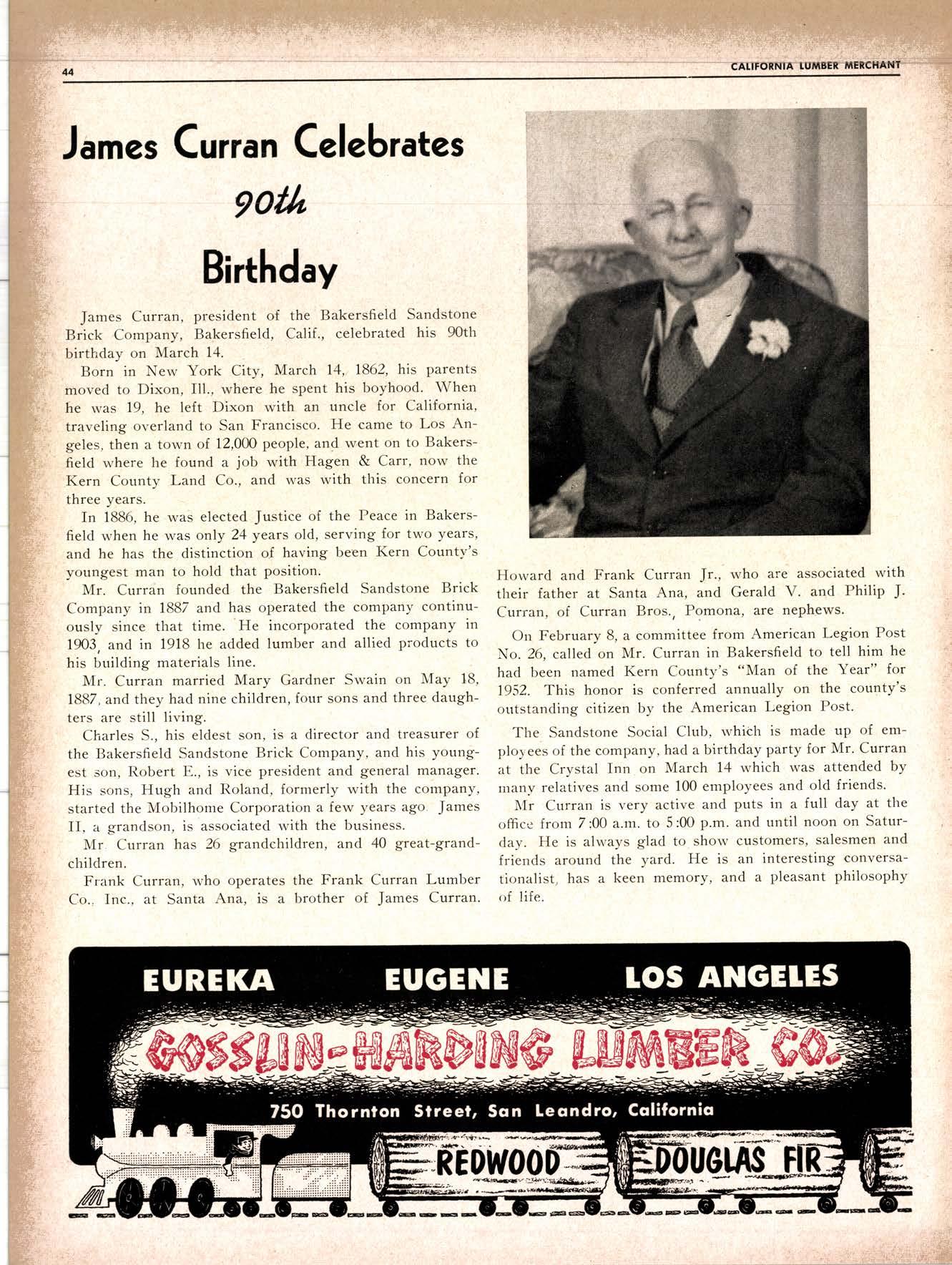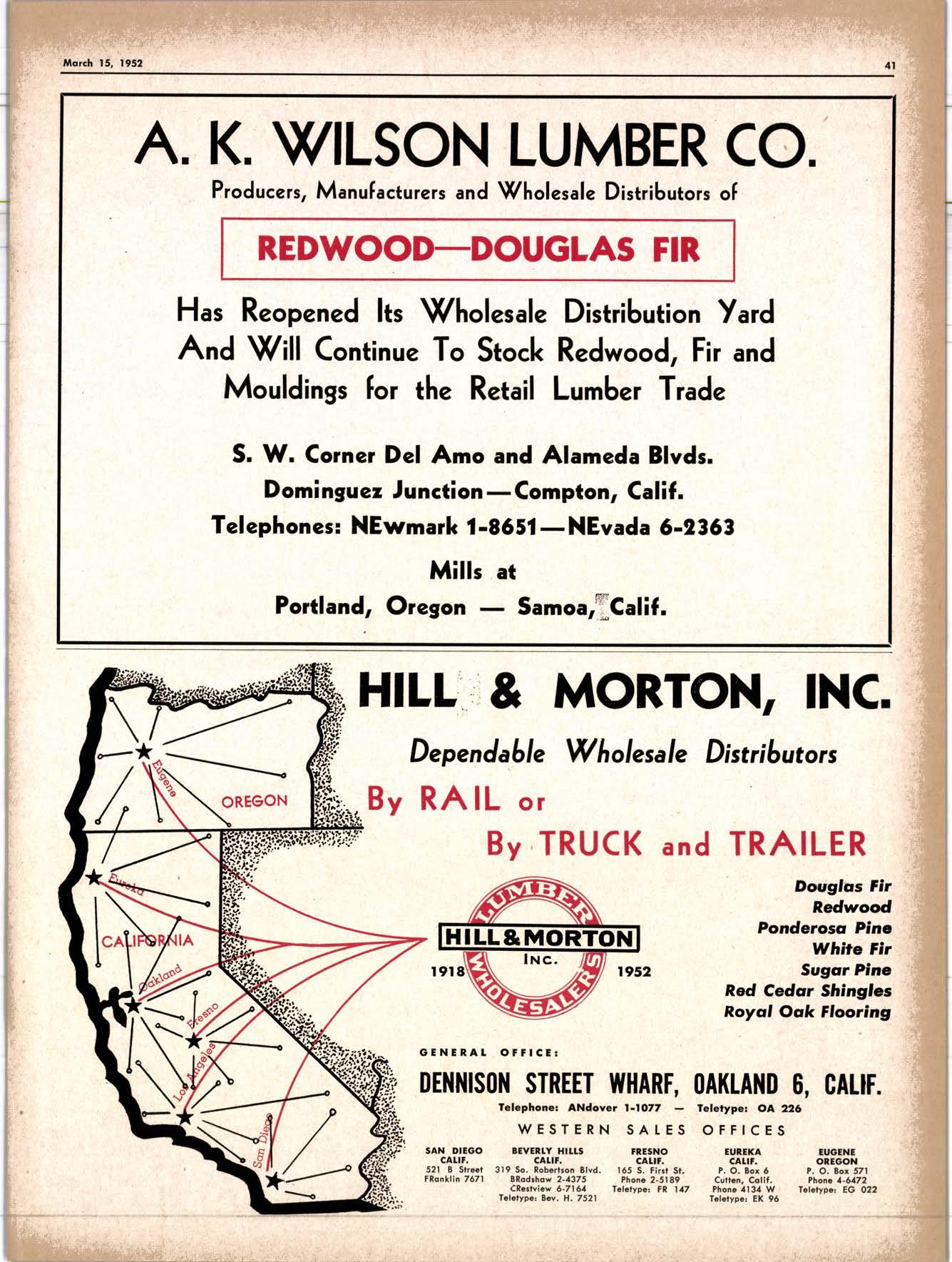
3 minute read
Lumber Stands Ready
Nation's Cldest Industry Can Supply Strong, Lasting Replacements for War-divertzd Steel ond Cther Metals
Whenever the u'orld faces an emergency situation as it does toclay, nrilitary and economic planners must look first to the supply of materials necessary to sustain military operations ancl to provide at least the n.rinimum essentials for the civilian poirulations.
These days naticlns everyrvhere are having to make decisions betr.rreen "guns ancl butter." In some parts of the rvorlcl, the decision must result in austerity programs because of limited supl>lies of all resources. \\re in the United States, likeu.ise. mrrst tighten our belts in the present emergency; but ne can still enjoy a considerable amotlnt of slack because of our immense output of products fronr a bountiful soil. One of those proclucts, second olrly to foocl irr its militarr- and economic importance, is n'oo<I. The United States is resuonsible for half of the t'orlct's total Iumber procluctior-r.
Moclern u'ars and modern civilization are foundecl on 'n,ood. Worlcl \\rar II, for example, rvhich ll,as the urost highly rnechanized corrflict in the historv of the u'orld, utilizecl more l'ood than did all the nation's Drevious u'ars combined.
'fodav, clefcnse mobilization l'ras already placed a strain on our productive capacity for steel, copper, and aluminttm. The National Production Authority points out that anticipated requirements for steel are far in excess of anticipated producticin, in spite of curbs in construction and other fielcls u,hich tend to limit less essential uses.
The Nfunitior.rs Roarcl and the l)efense Production Administration are urging military and civilian users of critical materials to re-examine their specifications u'ith a vieu' to greater use of more plentiful materials such as u'oricl. In this respect, the present national emergency is follol'ir-rg r:losely the pattern of \\rorld \\rar II.
I-umber stands reacly to fill both its military and civilialr recluirernents, ancl to lil1 the gaps created by scarcity of other materials.
I)rincipal use of softu'ood lumber in peacetime is in constmctior.r. Principal use of hardrvoods is in manufactured products such as furnitrrre, boxes, flooring, millu'ork, cars, handles, etc. The types of lumber recluired in a l'ar program are the same as those needecl for civilian use. Therefore, the lumber inclustry can easily convert to a l'artime basis. Even u'hen special u'artime clemands cail for products not norr.nally procluced by the industrl', about the only changes necessary in industrv operations are those recluirecl to meet specificatiorls as to size and grade. There is ncr problenr, generallr', of speciai re-toolirrg, scrapping of existing facilities. or clevelopment of neu' skills among the prorlucers.
Thus lumber stands ever ready to convert overnight from :r pe:rcetime to a u'artime basis; and l'hen the dove of peace returns, the industry just as quickly can go all out for civilian production.
Wood Makes the Difference
At no tirne has the United States really facecl a shortage of rvood. Wliile the capacity of otl.rer industries can be measured rvith a reasonable degree of accuracy, no one really knor,vs the fu11-operating capacity of the lumber industry \\re knorv, however, that it is very large.
For example, back in 1906-1907 the industry proclucecl 39 billion l>oard feet annually. ]'roduction dropped to l0 billion feet in 1932-during the depression years. In 1940, production jumped to 29 hillion feet. Responcling to increased u'ar and civilian demands, the industry produced 33.6 billion feet in 1941. Then in 1950, it produced 38 billicn feet. u.hich reflected the year's big demand for houses.
'I'he secret of the industry's ability to respond to the pulse of requirements lies in its ability to step up procluction rapiclly and in its ability to shift cluickly from one t1'pe of procluction to another as may be demarrded lty the emergency. In all, there are estin-rated to be f rorn 50,000 to 60,0@ sau'mills in the United States. Nlost of them are small mills, but they are the "safetl' r.alves" of the industry. Thev come into production u'hen the demand is high ; they drop out lvhen the demand is lou'.
It is extra c:rpacity and versatility that enables the lumber industry to reduce u,hat might be a program of austeritl' irr any emergency to one of mere belt tightening. And it is the addecl luxurv made possible by rvood that produces the difference betu'een a smooth-running, eflrcient enlergenc]: profJram and one fraught 'n ith frttstration and discomfort.
Take the matter of homes forn'arrvorkers and their families, for example. l-umber and plyrvood today are making possible the continuation of a vast construction llrogram t'hich, so far as materials are concerned, is limited onlv bv the availabilitl' of steel, aluminum. co1>per and other metals. And even so far as metals are concerned, Iumber and plyu,ood have reduced the drain on structural elements. The building industry realized that, pound for porrnd. timbe: can do as much r'vork as other building materials ; that. properly engineered, lumber can be superior on a cost-{or-cost comparison as \\re11.
In addition to u.ood for construction, t1.re civilian economy utilizes 1\'ood in hundreds of other u'avs. A check-list of the uses of u'ood in the average home, for example, reveals an astour.rding recorcl of our dependabilitv on n'ood and u.ood products. These have all'ays been available tcr the extcnt of their necessity, in war or peace.
Wood at War
Not only cloes u'ood provide for basic civilian needs and (Continued on Page 42)

